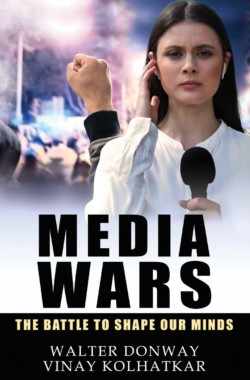Will the Cato Institute Uphold Intellectual Property?
An article on Cato Unbound entitled, “What’s the Best Way to Fix the Patent System’s Problems?” by Christina Mulligan, Assistant Professor of Law at Brooklyn Law School, argues for two different solutions of what she perceives are problems with software patents. One solution, advocated by Eli Dourado, is to eliminate all software patents (See CATO and Mercatus Center: Another Flawed Study on Patents). The other solution, advocated by John F. Duffy, is a more rigorous application of the obviousness standard. Ms. Mulligan comes down on the side of Eli Dourado’s solution of eliminating patents on software.
Cato Unbound, as is their practice, did present this as a debate on software patents. Those interested in the other views expressed, including the lead essay that Mulligan responds to, can find them here. However, even though Cato Unbound is a debating forum, and even though Mulligan does not represent Cato or purport to represent Cato, the Cato Institute has couched IP debates in paradigms not fundamental, and has itself published anti patent articles such as here, here, and here. As such the Mulligan article is symptomatic of the Cato Institute’s approach to intellectual property.
“Software patents” do not actually make a patent claim for the software; they claim—the apparatus, system, or method that uses software to wire a computer or computers. Any invention implemented in software that is executed on a computer can be implemented in hardware.
Software is a way of wiring an electronic circuit. So called “software patents” do not actually make a patent claim for the software; they claim—the apparatus, system, or method that uses software to wire a computer or computers. Any invention implemented in software that is executed on a computer can be implemented in hardware (i.e., an electronic circuit) as any competent electrical engineer knows. In fact, this is exactly what happens when software is executed, it is converted into a series of voltage levels that open and close switches in a general purpose electronic circuit called a computer to create a specific electronic circuit. This logically means that in order to eliminate patents on software implemented inventions, you have to eliminate patents on all electronic circuits. However, the paper never even addresses this inherent contradiction. This may be because the author of the paper does not have a technological background and is not a patent attorney, however the Cato Institute holds her out as an expert on patents.
The paper also states that:
Many software patents are merely mathematical formulae or abstract ideas and should not be considered patentable subject matter because they remove too much “raw” material from the public domain.
This statement confuses two separate points. One point is that many software patents are merely mathematical formulae or abstract ideas. The second point is that software patents remove too much raw material from the public domain. The idea that software (software patents) is merely mathematical formulae is incorrect in mathematics and computer science. While it is true that software often uses mathematical formulae, so do electronic circuits, radar, rockets, mechanical systems, chemical processes, in fact almost every area of technology. This does not make them a mathematical abstraction.
In one sense every invention in the history of the world is an abstraction. Inventions define a class of things. For instance the invention of the incandescent light bulb is not a specific incandescent light bulb, but the class of these objects.
The paper does not define what it means by an abstract idea. In one sense every invention in the history of the world is an abstraction. Inventions define a class of things. For instance the invention of the incandescent light bulb is not a specific incandescent light bulb, but the class of these objects. The only logical definition of an abstract idea is “a thought or conception that is separate from concrete existence or not applied to the practical.” Every invention that meets the requirements of 35 USC 112 first paragraph is not an abstract idea, since this section requires that the invention be described in a manner so one skilled in the art can practice the invention. Something that can be built and used (practiced) is concrete and applied, therefore it is not an abstract idea. Clearly software patents are not abstract ideas because they are concrete and applied to a problem of life. If they did not solve a problem of life, then no one would care, because no one would want to practice their invention.
The second point is that software patents remove too much raw material from the public domain. This is a bald statement without any support. In fact, patents do not remove any material from the public domain. They secure the property rights of an inventor to their invention that did not exist before they created the invention. To suggest that this removes anything from the public domain would make even the most strident Marxist blush.
The author attempts to use Ayn Rand in support of her position.
Even Ayn Rand sidestepped suggesting a length for intellectual property terms, stating that if intellectual property “were held in perpetuity . . . it would lead, not to the earned reward of achievement, but to the unearned support of parasitism.”
The paper does not mention that Rand stated “Patents and copyrights are the legal implementation of the base of all property rights: a man’s right to the product of his mind.”[1] You can see from this statement that it is very unlikely that Ayn Rand would have supported this paper’s position.
More importantly, all property rights are term limited. A dead person cannot own property. Property is a legal (moral) relationship between a person and something. Once the person is dead they cannot have a legal relationship to something on this Earth. That would be a contradiction. There is only the question of what happens to a property relationship when someone dies. However, no property rights go on forever.
The paper also ignores the obvious Constitutional problems with a law prohibiting patents on software or any other group of inventions. Article 1, section 8, clause 8 requires that the right of inventors to their inventions be secured. There is no basis under the Constitution to discriminate between securing the rights of inventors for chemical inventions, but not to software inventions for instance. Some have argued that the preamble to article 1, section 8, clause 8[2] is a limit on patents, but this is a clear misinterpretation of a preamble under legal construction. Preambles are never considered limiting in law. If the founders intended such a limitation then they would have left it to Congress to take whatever steps they deemed fit to promote the sciences and useful arts.
The United States of America created the strongest patent system in the world. Most of the greatest inventors in the history of the world—Edison, Tesla, Bell etc. lived and worked in the United States. In less than 100 years, they created the most technologically sophisticated country ever.
The paper’s arguments do not stand up to scrutiny. The United States of America created the strongest patent system in the world. Most of the greatest inventors in the history of the world—Edison, Tesla, Bell etc. lived and worked in the United States. In less than 100 years, they created the most technologically sophisticated country ever. Almost every modern product you use today was subject to a patent or a patented processes at some point. Your cell phone is the subject of hundreds of patents. The same is true of your computer, the Internet, the electrical power system, the medicines your take, the car your drive, even your glass windows (Venice patent system), even cement. For CATO and this paper to suggest that patents on software (or anything else) inhibit the progress of technology is an extraordinary claim and requires extraordinary evidence.[3] A burden they have not as yet made a dent in.
_______________________________________________________________________________________________________________________________________________________________________________________________
[1] Rand, Ayn, Capitalism: The Unknown Ideal, Signet, New York, 1967, p. 130.
[2] “To promote the Progress of Science and useful Arts, by securing for limited Times to Authors and Inventors the exclusive Right to their respective Writings and Discoveries”
[3] Thomas Paine.
« Conservatives against the Core Principles of Capitalism State of Fear Gets Hotter with Global Warming »











